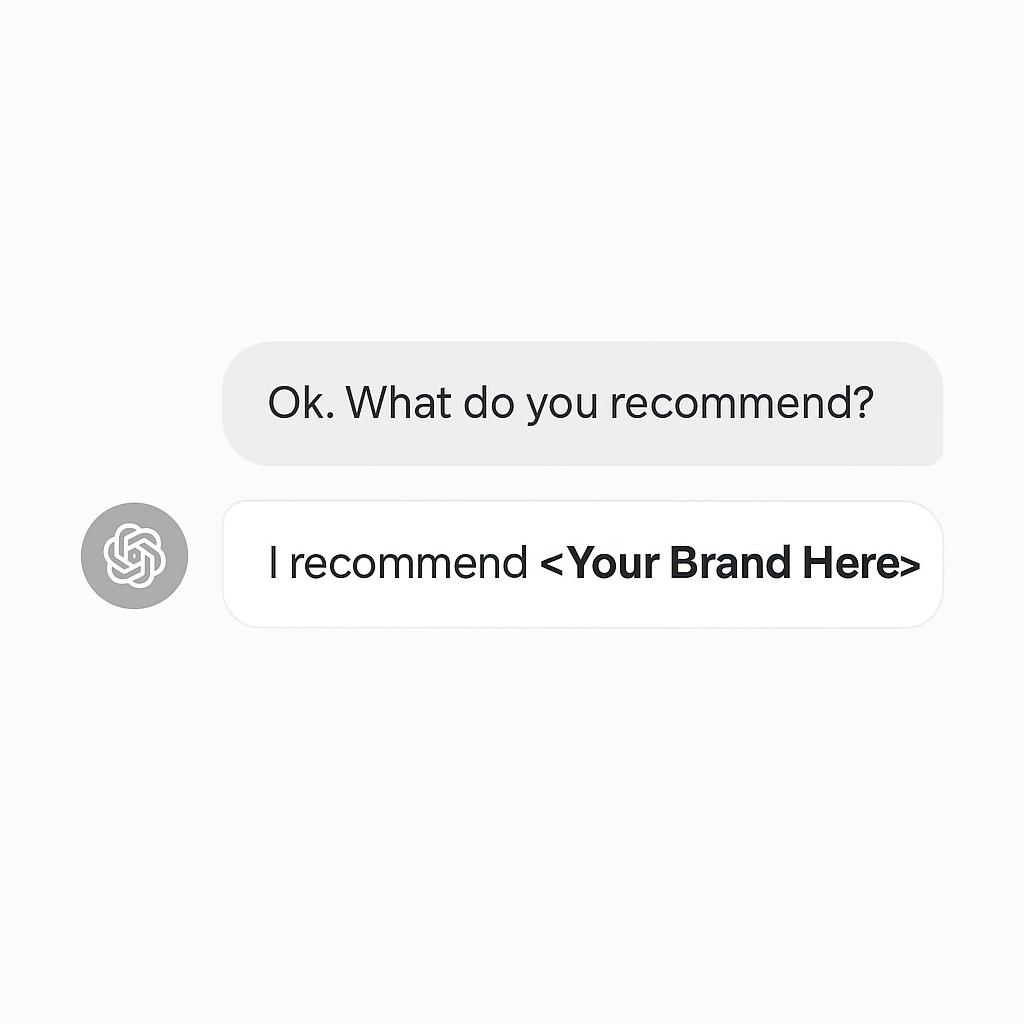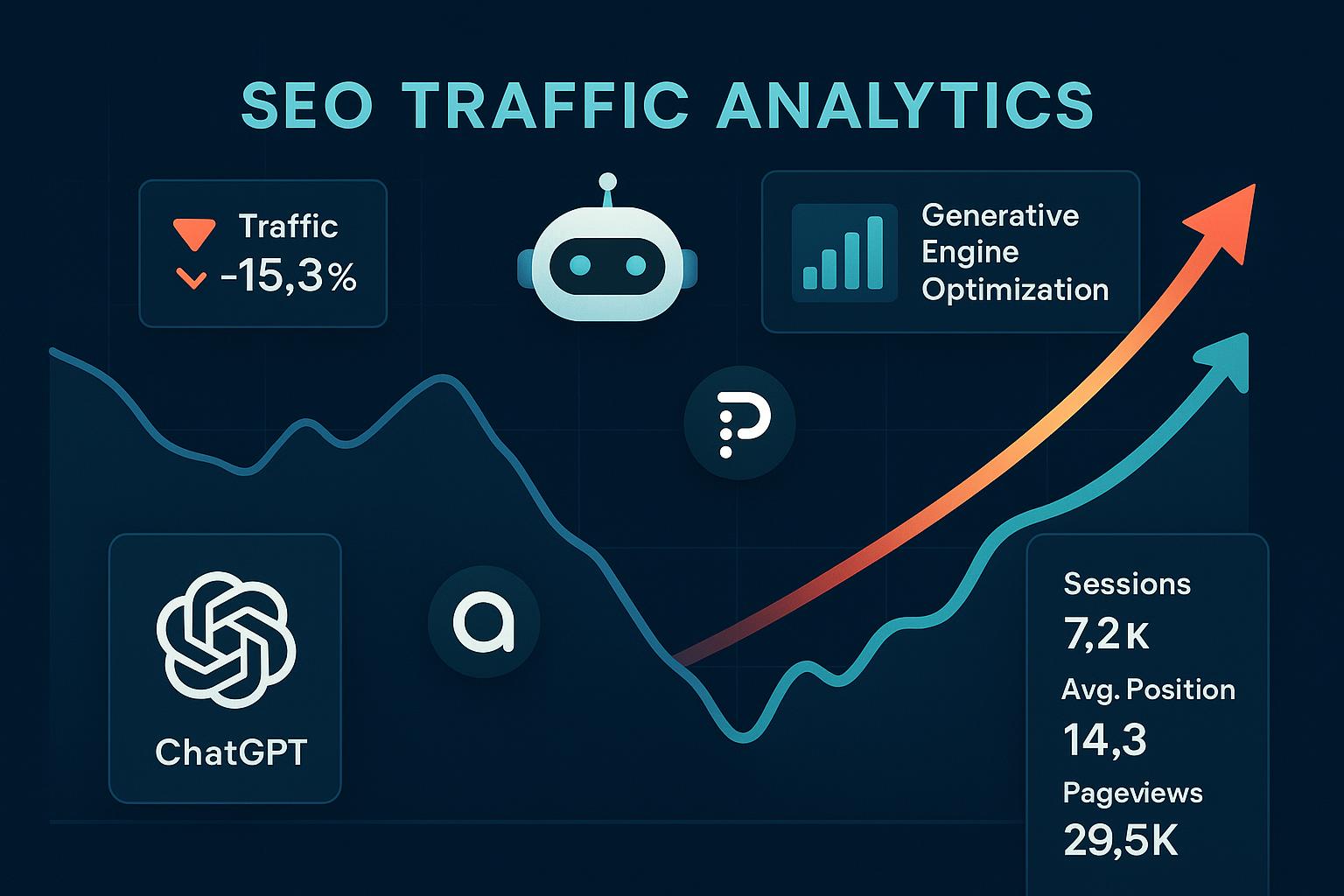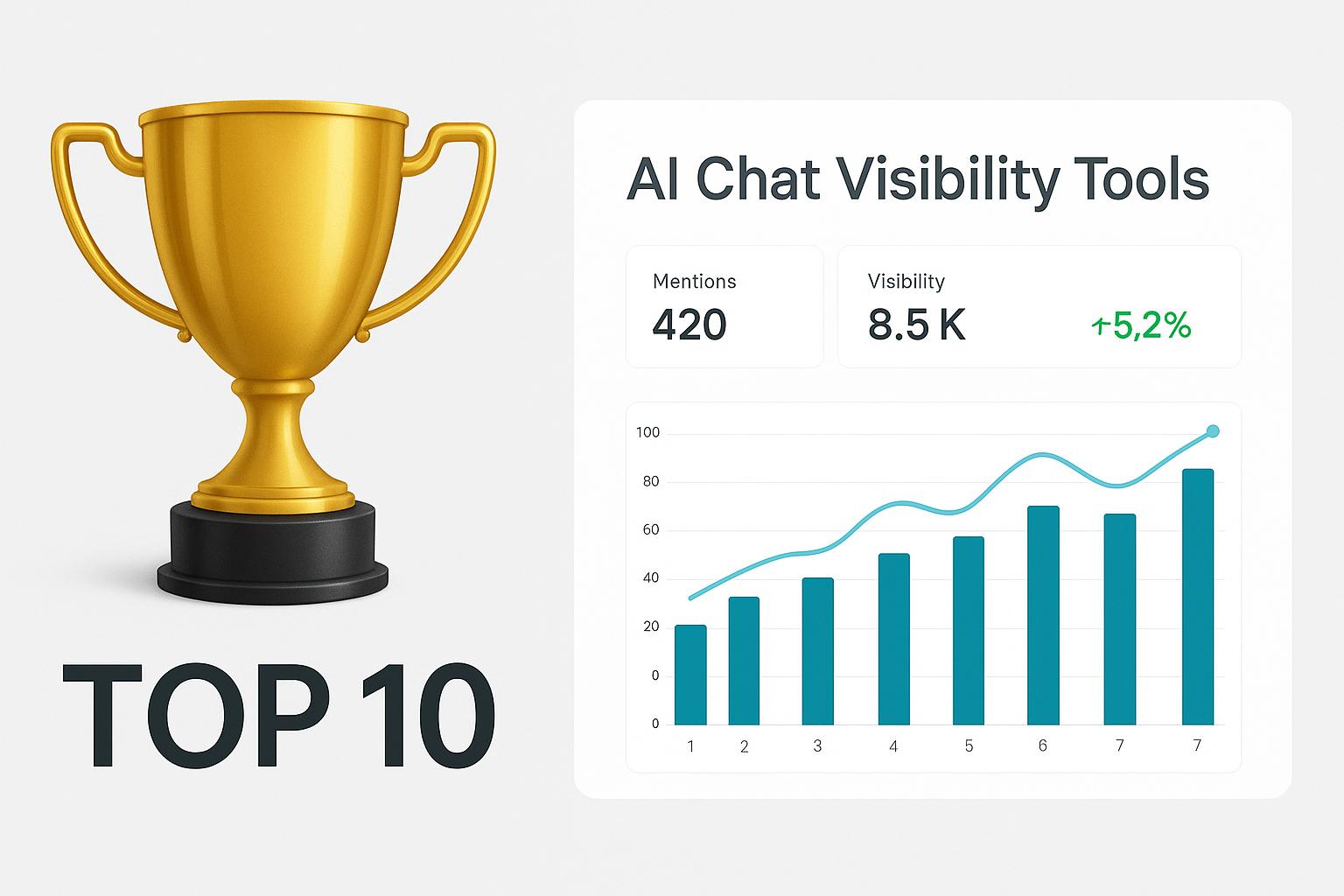
Co-Branded AI Chat Visibility Tools: The 2026 Agency Guide
Explore the top co-branded AI chat visibility tools for agencies. Learn how to monitor client mentions in generative AI and why co-branding is the new standard.
RivalSee
14 min read
SEO
Follow this 7-step action plan to get your site featured in ChatGPT responses. Complete with templates, tools, and weekly monitoring strategy.

Getting your site featured in ChatGPT responses doesn’t happen by accident. It requires a systematic approach that most businesses are still figuring out. While your competitors are debating whether AI search matters, you can be implementing a proven 7-step system that gets results.
This isn’t another theoretical guide about AI SEO. This is a step-by-step action plan you can implement this week, complete with templates, monitoring schedules, and specific tools that actually work. By following these 7 steps, you’ll have a clear path from zero AI visibility to consistent ChatGPT citations.
What you’ll get from this guide:
Looking for the complete technical background on AI SEO? Check out our comprehensive AI SEO Guide: Optimizing Your Content for ChatGPT and Claude for in-depth strategies and theory.
Start by developing clear ICP personas to understand what your customers are really asking AI chatbots. List the different customer profiles you serve, think “IT manager at a 50-person SaaS” or “homeowner fighting yellowjackets”, then imagine the conversational prompts those personas would type. They’re not searching for keywords anymore; they’re asking full questions like “What’s the safest yellowjacket trap for kids?” or “Best project-management tool under $30/month?”
These prompts become your research corpus for AI search optimization. The principle is the same: understand the query before you optimize the answer.
Recommendation: RivalSee accelerates this entire process by generating detailed personas for your business and then auto-generating realistic question sets for each persona. Instead of guessing what your audience might ask, you’ll have data-driven insights into their actual queries, complete with related follow-up questions they’re likely to pose.
Digital marketing agencies: If you’re managing multiple clients’ AI visibility, check out The Best AI Visibility Tracking Tools for Digital Marketing Agencies for agency-specific platforms and features.
Run every priority prompt in ChatGPT, Google’s AI Overview, Perplexity, Claude, and Gemini. Note if, where, and how your site is cited. This baseline shows which gaps matter most and provides a scoreboard to prove progress later. Without consistent tracking, you’re flying blind in your generative engine optimization efforts.
Recommendation: Use an automated AI SEO platform like RivalSee to perform weekly or semi-weekly checks, graph your movement over time, and compare against competitors. RivalSee tracks positions consistently across all major AI platforms, saving hours of manual work while ensuring you never miss important visibility changes. You’ll see exactly when your content starts appearing and can track trends that manual checking would miss.
Create pages that mirror each question in the title and H1, place a concise answer near the top, and expand with supporting detail below. This isn’t about keyword stuffing. It’s about directly answering the questions your audience asks AI chatbots.
Generate lots of content because ChatGPT frequently surfaces long-tail answers. Covering variants like “cheapest,” “fastest,” or “2024 edition” widens your net considerably. Make sure to server-side render critical text and avoid hiding content behind client-side-only JavaScript, because many AI crawlers skip JS entirely. Use clear heading hierarchy, descriptive meta descriptions, and FAQ or How-To schema to reinforce topical relevance.
When you test prompts, jot down every site linked in the AI’s footnotes or references. Or use RivalSee’s list of sources as it monitors your queries. Those pages rank in the traditional top-10 and therefore feed the generative answers. This insight is crucial for your generative engine optimization strategy.
Reach out to those publishers with fresh stats, guest insights, or updated resources that link back to you. Standard SEO link-building rules apply here. The stronger your backlink profile and organic ranking, the more likely generative models will quote your URL. Aim to break into the first results page for each target query, as this is where AI models pull their information.
Create a sitemap and submit it to Google Search Console and Bing Webmaster Tools. This step is critical because GPTs call Google and Bing search APIs and then analyze the top 10 pages when giving an answer. If your site isn’t properly indexed or doesn’t rank well, AI platforms won’t find it.
Make sure your pages load quickly. Slow-loading sites often get skipped by crawlers racing through search results. Keep all pages returning 200 status codes, use canonical tags to consolidate duplicate versions, and fix any crawl errors immediately. This technical foundation might seem basic, but without it, even the best content won’t get discovered by AI search systems.
Test posts that pose the full question in the headline (“How do I get onto ChatGPT search results?”) against ones that start with the answer (“Yes, here’s how to appear in ChatGPT”). Track which style climbs into Google’s top-10 fastest and later shows up in AI citations.
It’s easiest to use an AI SEO platform to track how well your experiments do. Sites like RivalSee can help you track which content formats perform best across different AI platforms, letting you adjust formatting, schema, and internal links based on what actually wins citations.
Set up a consistent monitoring schedule to review positions once a week. The key is establishing a cadence that lets you see the moment your brand first appears and how it trends over time. If a citation drops, you need to quickly diagnose whether a link broke, content went stale, or a competitor published something newer.
RivalSee and other GEO/AI-SEO platforms can handle this monitoring for you, tracking your visibility across all major AI platforms and alerting you to changes. This isn’t a set-it-and-forget-it process. Treat AI search optimization as an ongoing program, not a one-off project, and the gains will compound over time.
Search-based answers can start referencing your new pages within days once Google and Bing recrawl, but default, non-search generative replies rely on model checkpoints that refresh every few months. Expect a three-to-six-month lag before brand-new material becomes part of the underlying model knowledge. This timeline is why starting with the right tools and strategy from day one matters so much.
JavaScript rendering, citation displays, and ranking factors evolve constantly. Follow industry updates and be ready to adjust your approach. The sites winning at SEO for AI chatbots today are those staying ahead of these changes and adapting quickly when new patterns emerge.
Most importantly, remember that visibility often grows in bursts. Keep refining your approach, keep tracking with AI search optimization tools, and the appearances will accumulate. What starts as occasional citations can quickly snowball into consistent AI visibility across multiple platforms.
While you could attempt manual tracking and optimization, the smart approach is to use specialized AI search optimization tools from the start. RivalSee handles persona creation, question generation, and continuous monitoring in one platform. It can save weeks of manual work while providing insights you’d likely miss on your own.
The platform automates the heavy lifting of tracking your visibility across ChatGPT, Perplexity, Claude, and other AI platforms, while helping you discover the exact questions your audience asks. Instead of guessing what might work, you’ll have data-driven insights guiding your generative engine optimization efforts.
For a complete comparison of available platforms, see our guide to the 10 Best Tools for ChatGPT & Google AI Visibility, or if you’re budget-conscious, check out 5 Cost-Effective AI SEO Monitoring Alternatives.
Getting your site to appear on ChatGPT is about understanding how AI search works and optimizing accordingly. Start by mapping your audience’s questions, benchmark your current visibility, then systematically create content that answers those queries directly. Build authority through strategic citations, perfect your technical SEO, and maintain consistent monitoring to adapt as the landscape evolves.
The businesses winning at AI search optimization are those taking action now, while the space is still emerging. With the right approach and tools, you can establish strong AI visibility before your competitors even realize they need it.
Don’t wait for your competitors to figure this out first. The sooner you start optimizing for AI search, the stronger your position will be as these platforms become the primary way people find information online.
Ready to get started? Visit RivalSee.com to begin tracking your AI search visibility today.
Continue learning with these related insights.

Explore the top co-branded AI chat visibility tools for agencies. Learn how to monitor client mentions in generative AI and why co-branding is the new standard.
RivalSee
14 min read

Discover how to adapt your SEO strategy for AI-driven search results and recover lost traffic. Learn about Generative Engine Optimization (GEO), conversational content, and top AI SEO tools.
RivalSee Team
15 min read

Struggling with AI search visibility? Discover the top 10 tools to optimize your content for ChatGPT, Google AI Overviews, and more.
RivalSee Team
12 min read